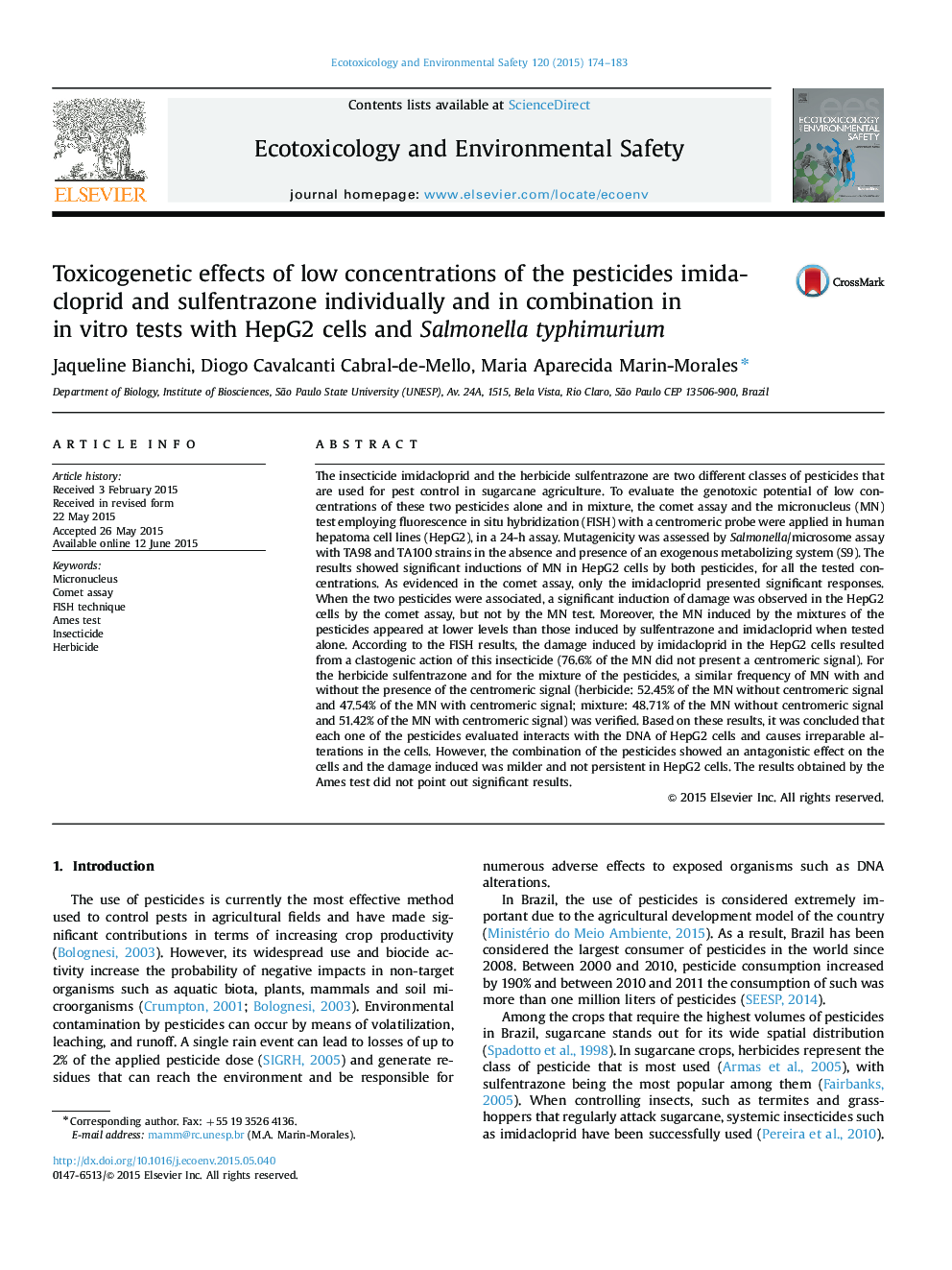| کد مقاله | کد نشریه | سال انتشار | مقاله انگلیسی | نسخه تمام متن |
|---|---|---|---|---|
| 4419416 | 1618943 | 2015 | 10 صفحه PDF | دانلود رایگان |

• Imidacloprid and sulfentrazone commercial formulations are genotoxic to HepG2 cells.
• The hybridization in situ results showed that imidacloprid is a clastogenic compound.
• The imidacloprid and sulfentrazone mixture induces genotoxic effects in HepG2 cells.
• The combination of both pesticides causes an antagonistic effect on the HepG2 cells.
The insecticide imidacloprid and the herbicide sulfentrazone are two different classes of pesticides that are used for pest control in sugarcane agriculture. To evaluate the genotoxic potential of low concentrations of these two pesticides alone and in mixture, the comet assay and the micronucleus (MN) test employing fluorescence in situ hybridization (FISH) with a centromeric probe were applied in human hepatoma cell lines (HepG2), in a 24-h assay. Mutagenicity was assessed by Salmonella/microsome assay with TA98 and TA100 strains in the absence and presence of an exogenous metabolizing system (S9). The results showed significant inductions of MN in HepG2 cells by both pesticides, for all the tested concentrations. As evidenced in the comet assay, only the imidacloprid presented significant responses. When the two pesticides were associated, a significant induction of damage was observed in the HepG2 cells by the comet assay, but not by the MN test. Moreover, the MN induced by the mixtures of the pesticides appeared at lower levels than those induced by sulfentrazone and imidacloprid when tested alone. According to the FISH results, the damage induced by imidacloprid in the HepG2 cells resulted from a clastogenic action of this insecticide (76.6% of the MN did not present a centromeric signal). For the herbicide sulfentrazone and for the mixture of the pesticides, a similar frequency of MN with and without the presence of the centromeric signal (herbicide: 52.45% of the MN without centromeric signal and 47.54% of the MN with centromeric signal; mixture: 48.71% of the MN without centromeric signal and 51.42% of the MN with centromeric signal) was verified. Based on these results, it was concluded that each one of the pesticides evaluated interacts with the DNA of HepG2 cells and causes irreparable alterations in the cells. However, the combination of the pesticides showed an antagonistic effect on the cells and the damage induced was milder and not persistent in HepG2 cells. The results obtained by the Ames test did not point out significant results.
Journal: Ecotoxicology and Environmental Safety - Volume 120, October 2015, Pages 174–183